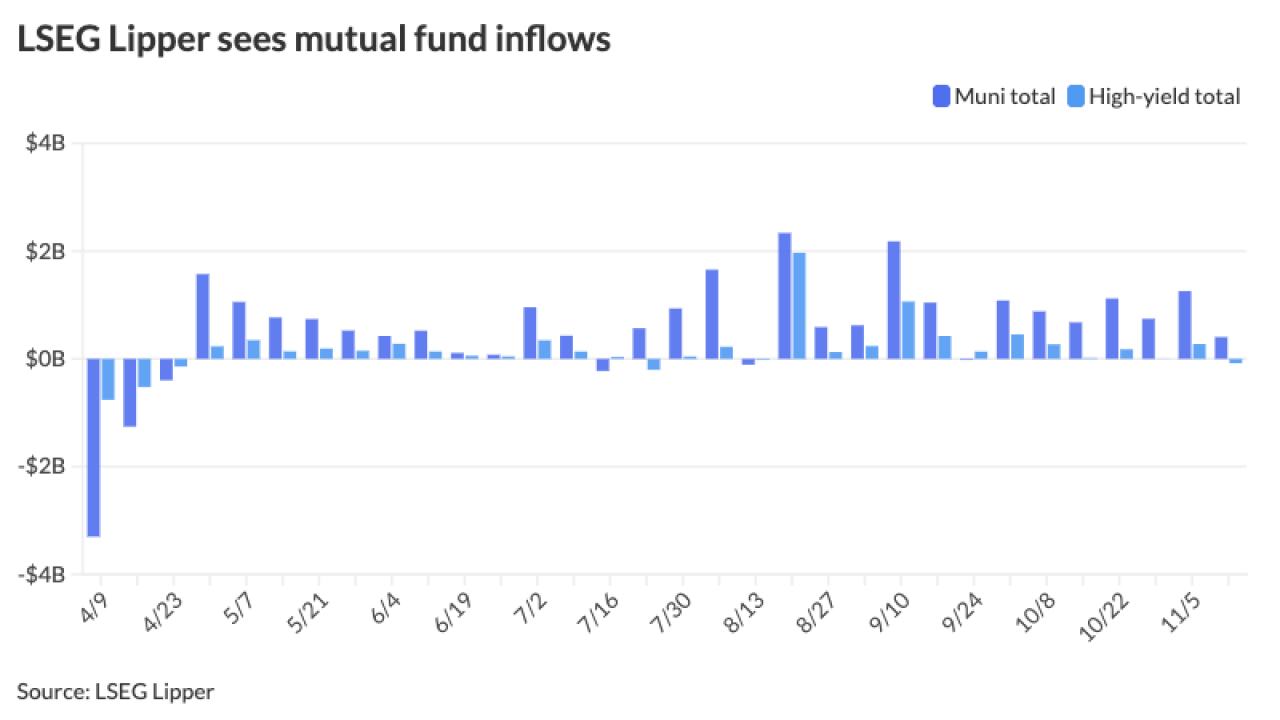WASHINGTON – The National Association of Bond Lawyers has released six final model issue price certificates to help municipal market participants comply with the Treasury Department’s new issue price rules that are to take effect on June 7.
The final certificates “are the product of a lot of collaboration and input from a lot of members and other market participants,” said Darren McHugh, a shareholder at Stradling Yocca Carlson & Rauth in Denver who played a key role in drafting the documents.
Issue price is important because it determines the yield on bonds and whether an issuer is complying with arbitrage rebate or yield restriction requirements. It also key to determining the maximum allowable yield for the investment of proceeds from advance refunding bonds and whether the subsidy payments for direct-pay bonds such as Build America Bonds are appropriate.

The issue price certificate is the document the underwriter typically provides the issuer after the sale of bonds in a negotiated sale and it is usually executed as the closing of the transaction approaches. In a competitive sale, the municipal advisor may provide also provide a certificate.
The general new rule is that the issue price will be the price at which the first 10% of a maturity of bonds is actually sold to the public. But if 10% of a maturity is not sold, a special "hold-the-offering-price rule" can be used under which the issue price is the initial offering price (IOP) as long as the underwriters hold it for five business days after the sale date. This holding requirement is designed to prevent pricing abuses such as flipping where dealers and institutional investors keep selling the bonds pricing them higher and higher before selling them to retail investors. The lead underwriter must certify the IOP to the issuer, as well as provide documentation, such as the pricing wire. Each underwriter in a syndicate must agree in writing that it will not offer or sell the bonds at a price higher than the IOP for five business days after the sale date.
There is an exemption for competitive sales in the new rules under which an issuer may treat the reasonably expected IOP of the bonds to be the issue price if the issuer obtains a certification from the winning underwriter bidder as to the reasonably expected IOP upon which it based its bid. But this exemption is conditioned on, among other things, the issuer receiving at least three bids from separate underwriters and awarding the bonds to the bidder who offers the highest price or lowest interest cost.
Issuers have the option of using any of these rules up until the closing (issue) date for their bond transactions.
NABL is releasing six model issue price certificates that are revised from the ones it proposed in March based on the comments it received and the changes that the Securities Industry and Financial Markets Association made in the final model bond offering documents it released for the new rules a week and a half ago, said McHugh.
The first NABL document is a consolidated form of a certificate for negotiated sales that covers all of the alternatives of determining issue price in negotiated sales. It can be used when 10% of some of the maturities of the bonds are sold to the public and underwriters “hold-the-offering price” for the other bonds. It can also be used separately when either all of the bonds have 10% of maturities sold to the public or underwriters “hold-the-offering price” for all of the bonds. The document can be adjusted to either one of these three alternatives.
NABL also provides separate model certificates of issue price for each of the alternatives for negotiated sales for market participants who don’t want to use the consolidated certificate.
The group also provides a certificate for competitive sales, which is accompanied by a certificate of the municipal advisor. “The context of these transactions, particularly the role of the municipal advisor, makes it such that the issuer and bond counsel should obtain information relating to the issue price determination separately from the successful bidder and the municipal advisor,” NABL said in its release.
“In [competitive] transactions where the issuer does not engage the services of a municipal advisor, bond counsel will need to consider whether representations relating to the factual matters otherwise addressed in the certificate of the municipal advisor should be made by the issuer or a different transaction participant,” NABL said.
The issue price certificate for competitive sales does not specify how to calculate interest costs. This reflects the fact that the new issue price rules simply say the bonds must be awarded to the bidder that offers to purchase the bonds at the highest price, or lowest interest cost, without specifying how the interest cost is to be determined.
“The understanding of the NABL members involved in preparing the model issue price documentation is that the phrase ‘issue cost’ was intended to be broad, in an effort to afford issuers and their municipal advisors flexibility to determine how best to measure the financial basis upon which to award bonds in a competitive sale,” the group said.
NABL also provides an issue price certificate for private placements. The new rules state that the issue price in a private placement is the price paid for the bonds by the purchaser, not including any costs of issuance.
“Certain [private placements], particularly those structured as bank loans, may involve costs that are either paid to the purchaser (or proceeds retained by the purchaser) that may be treated either as costs of issuance or as costs that should adjust the issue price of an issue,” NABL said, adding, “NABL members should carefully consider the treatment of ‘points’ paid by a borrower, commitment fees, and amounts charged by a purchaser that may relate to services performed by or on behalf of the purchaser or lender.”





